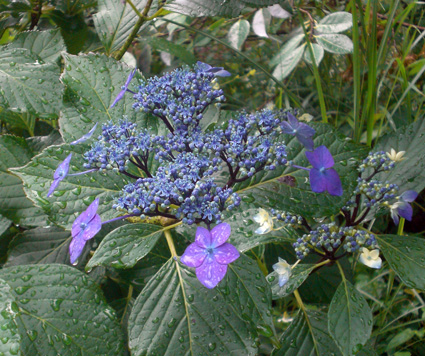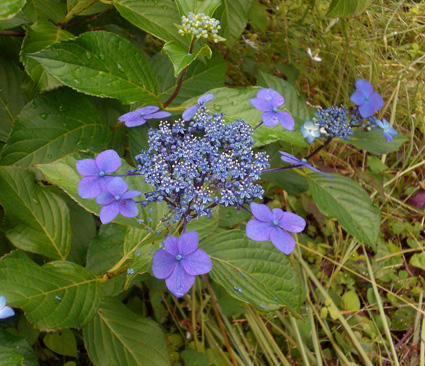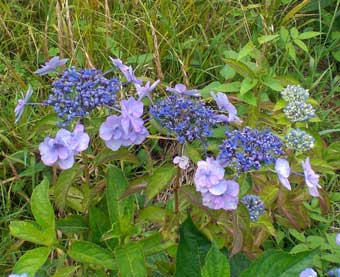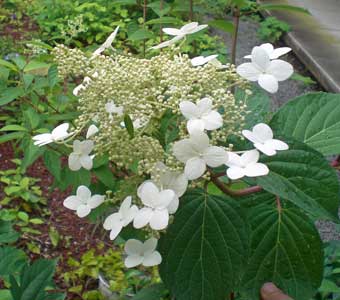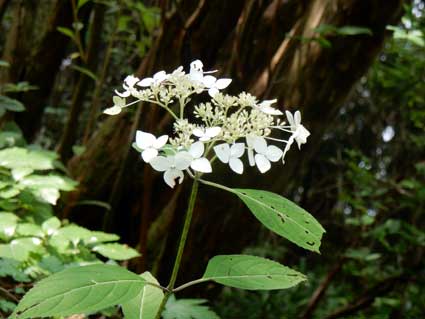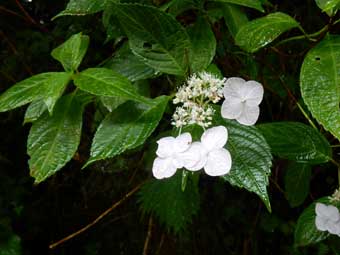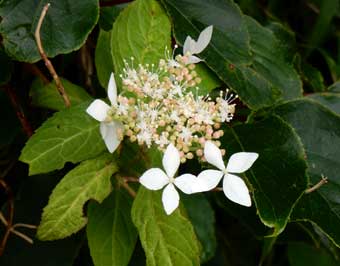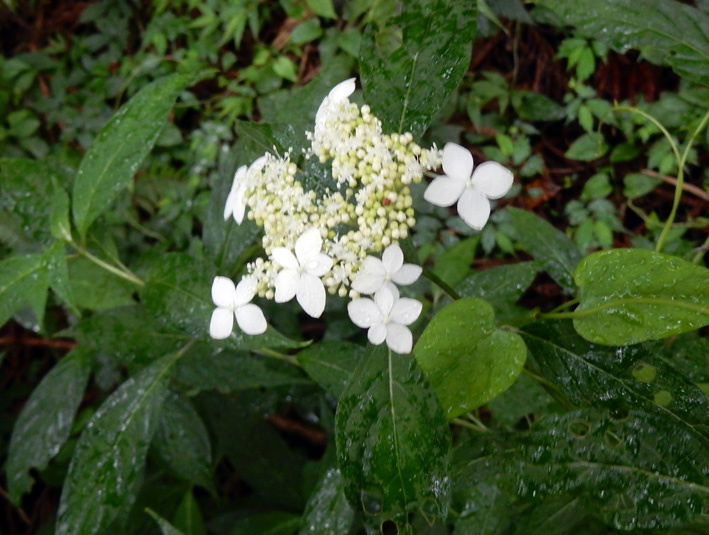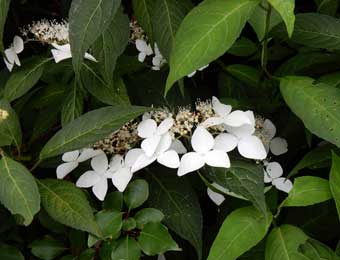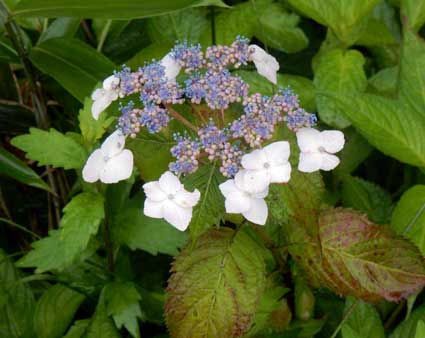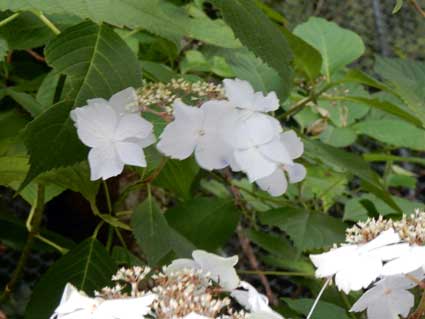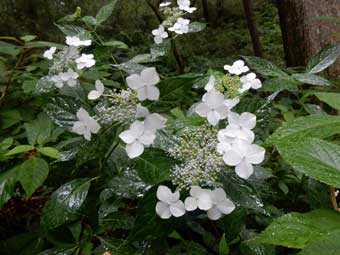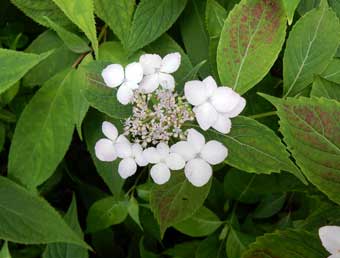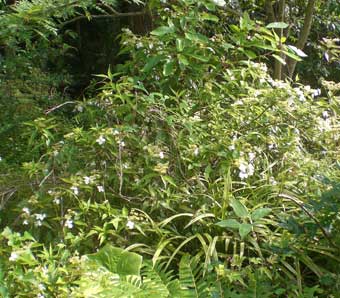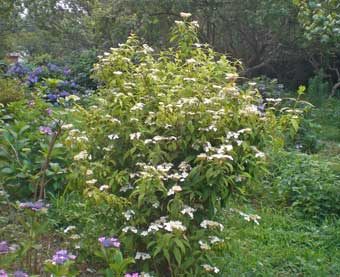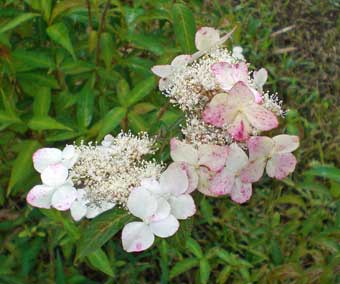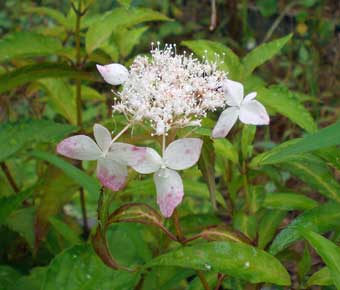No. 01
Sepals are dark lilac, also dark red in alkaline soil. |

|

|
No. 02
White ray-flowers and fertile flowers, sepals serrate. |
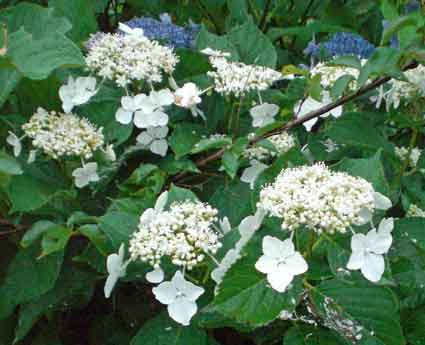
|
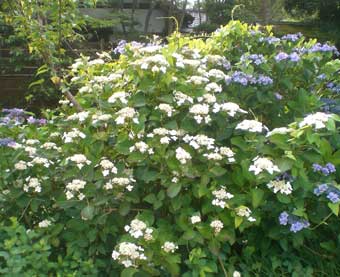
|
No. 02m
With dark purple branches.
This plant is a mutant of 'No.02'. |
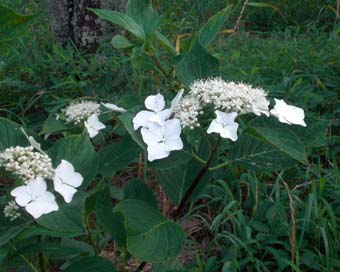 |
|
No. 03
Izu hydrangea series
Y.Fujimatsu discovery
Double ray-flowers, much like 'Jogasaki'. |

|
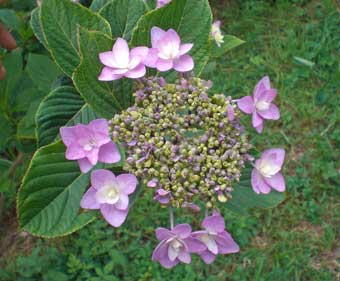
|
No. 04
White ray-flowewrs and fertile flowers, sepals entire. |
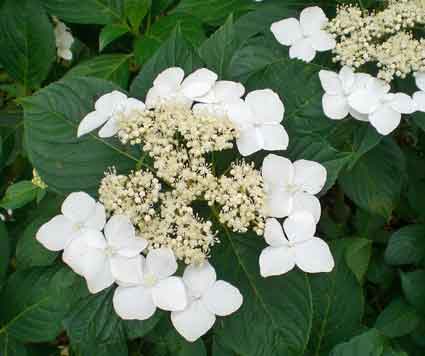
|

|
No. 3
The ray-flowers are small, sepals with white stripes.
|
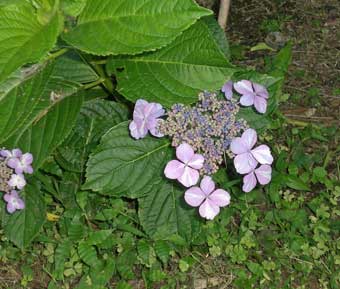
|

|
No. 4(Jogasaki)
Izu hydrangea series
Double ray-flowers. |

|

|
No. 5(Iso bue)
Izu hydrangea series
It is a large strong shrub with double ray flowers,sepals dark lilac and
acuminate. |

|

|
No. 11
The number of florets varies from a single ring to almost mophead. |
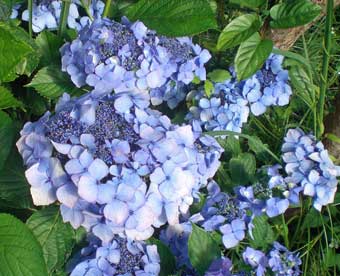
|
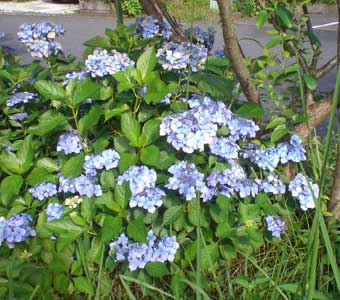
|
No. 13
The ray-flowers are large with serrate sepals, beautiful multicolor sepals. |
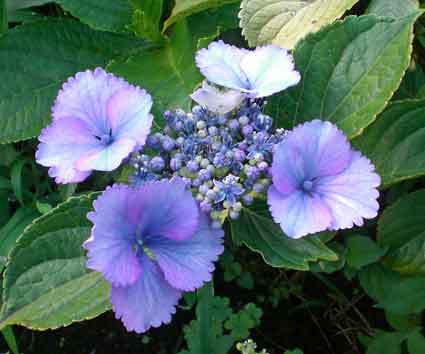
|
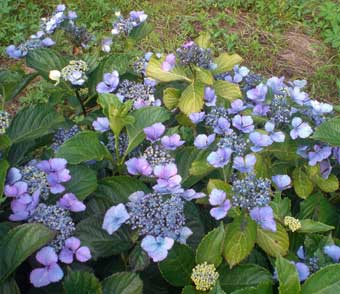
|
No. 14(Izu no hana)
Izu hydrangea series
Takemi Iida discovery
A race cup type with double ray flowers with small florets.
The shrub is not large. |
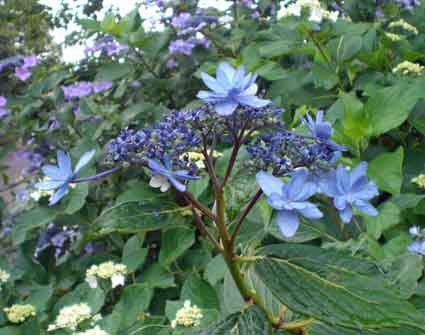
|
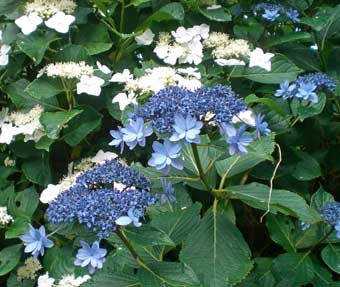
|
No. 17(Yamato ajisai)
Mophead Type
This is a mophead that Iwas first discovered in Jogasaki -coast. Flower color dark. The mother-plant at the habitat was the height of more than two meters, although it was withered now. |
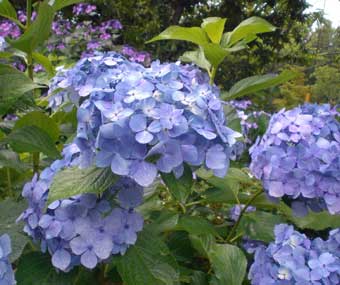
|
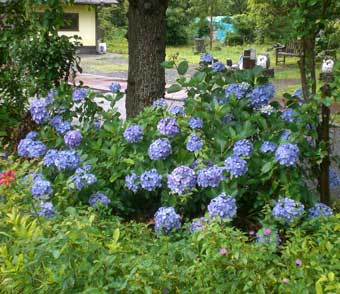
|
No. 704
The florets consist of three sepals. |
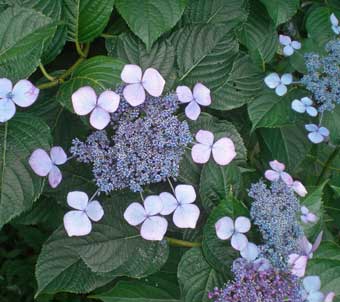
|
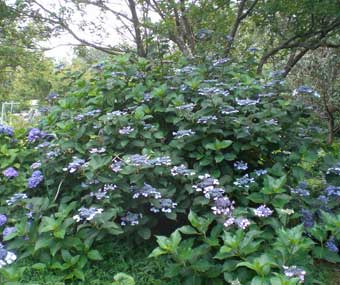
|
No. 708
The florets are large, sepals 6~7.5cm long and entire.
|
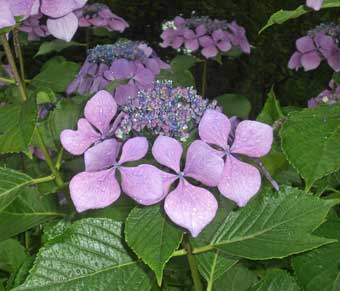
|
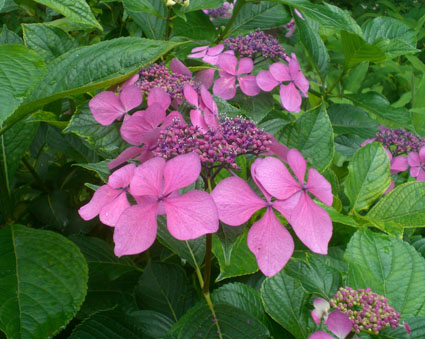
|
No. 709
Ray-flowers are rounded and deep blue. |
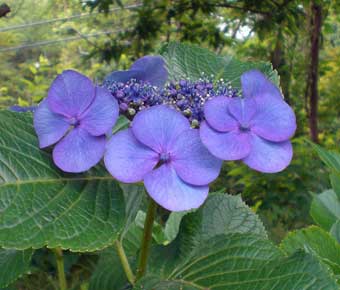
|
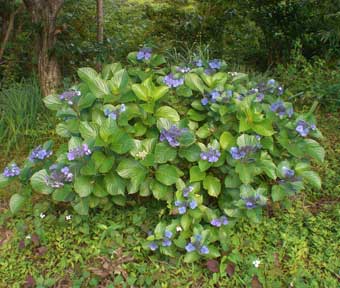
|
No. 710
Mophead Type
The right photograph was taken at the place which grows wild. |
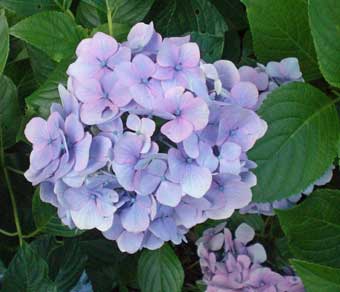
|

|
No. 710m
With dark purple branches.
This plant is a mutant of 'No.710'. |
 |
|
No. 711(Iso mando)
Mophead Type
The corymbs are globular and often long, similar to 'Himeajisai'. |
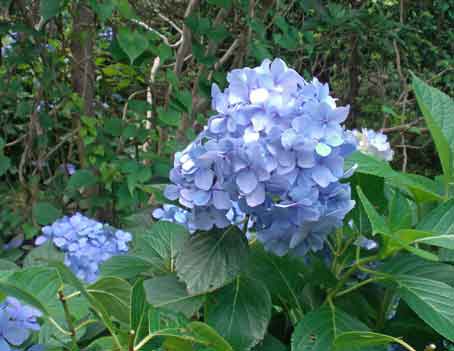
|
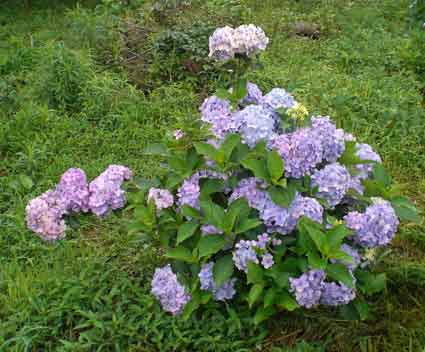
|
No. 712
Mophead Type
This flowers are similar to No.711. |

|
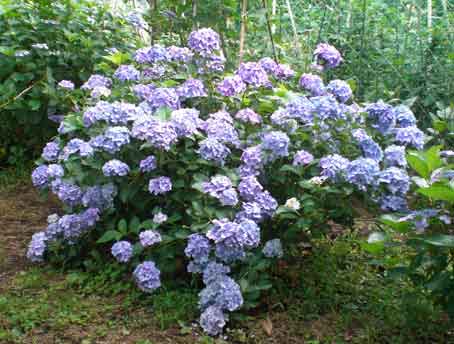
|
No. 713
Mophead Type
|

|
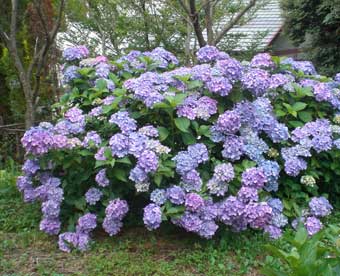
|
No. 714
Mophead Type
The center of florets are dark color. |
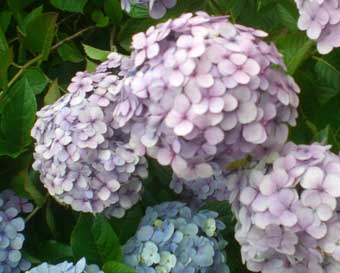
|
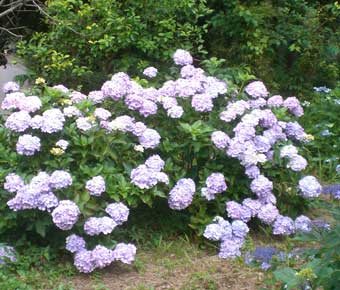
|
No. 717
Flowerheads are a partly double ring of ray-flowers, selals slightly dentate. |

|
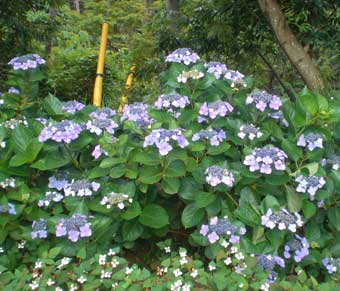
|
No. 719
The florets consist of four or five sepals, rounded and entire. |

|
|
No. 722
The sepals are rounded and entire. |
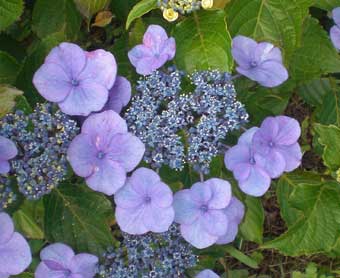
|

|
No. 801
The sepals are heavily dentate. |

|
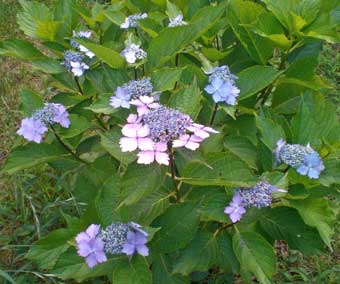
|
No. 802
Sepals are serrate, ray-flower a darker center. |
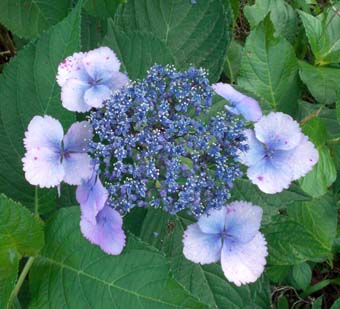 |
 |
No. 803
The number of ray flowers varies from a single ring to mophead.
The right photograph was taken at the place which grows wild. |
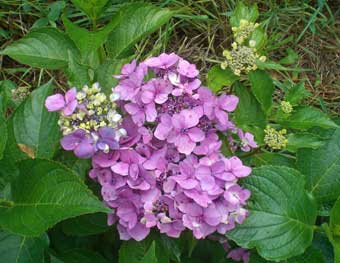
|

|
No. 805
Mophead Type
Flowers are usually purple, pink on alkaline soils. |

|
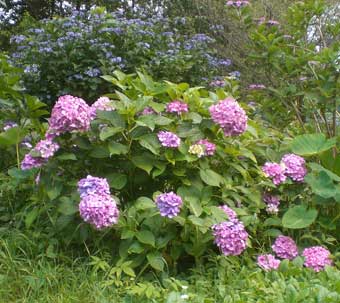
|
No. 806
Small and many florets. |
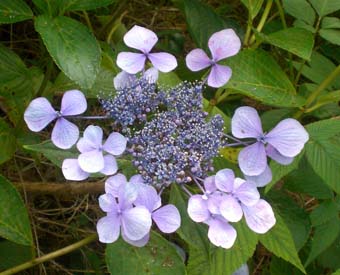 |
|
No. 809
The flowerheads have many florets. |
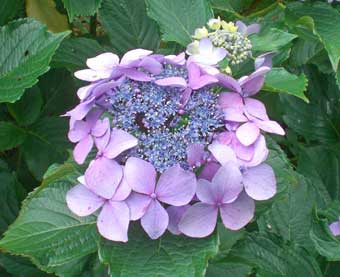
|

|
No. 810
The color with the feeling of the transparency |
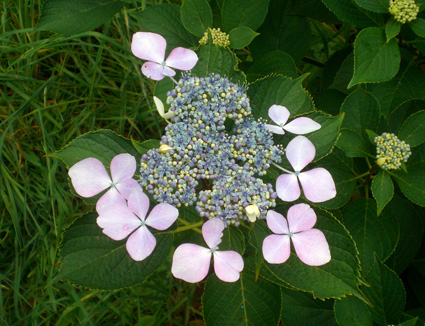 |
|
No. 903
This flower blooms to two colors.
|
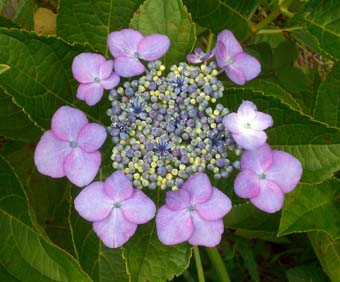 |
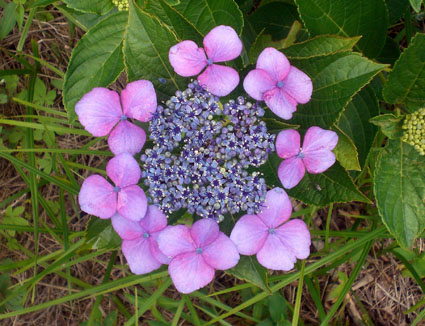 |
No. 920
Stripe Type The sepals are entire |
 |
|
No. 921
Small florets, ray-flowera darker center |
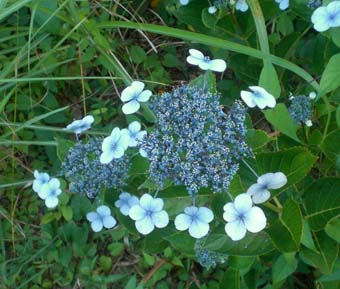 |
|
No. 922
The flowerheads have many florets. The flowers are opened from an outside
ring.
|
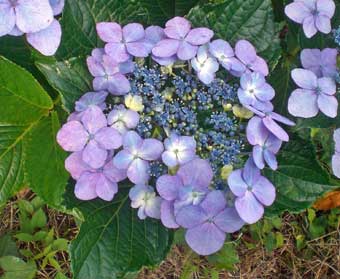
|

|
No. 923
The flo |
 |
|
No. 924
Large florets |
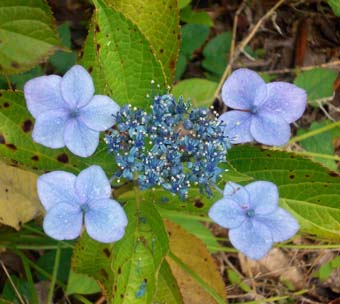 |
|
No. 927
Ray-flowers darker center.
|
 |
|
No. 101
Ray-flowers darker center. The sepals are round and dentate.
|
 |
|
No. 102
Large florets. Ray-flowers darker center. |
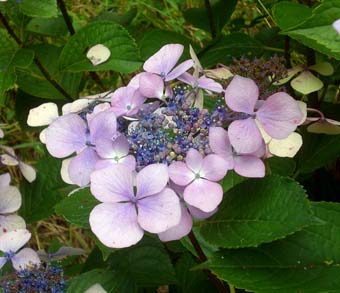 |
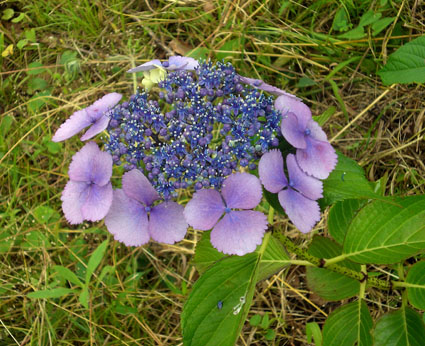 |
No. 103
Mophead Type
The left photograph was taken at the place which grows wild.
|
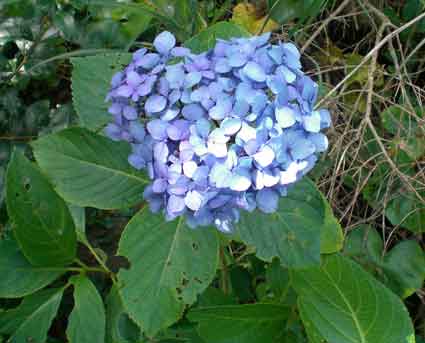
|
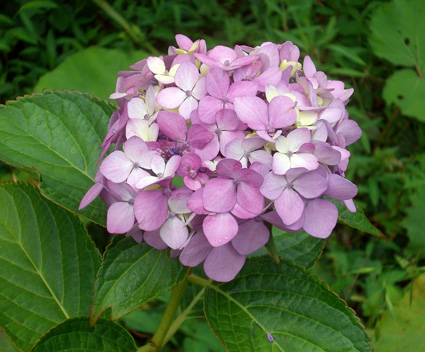
|
No. 104
The flowerheads have many florets, sometime 20 or more, and flattened.
The flowers are opened from an outside ring.
|
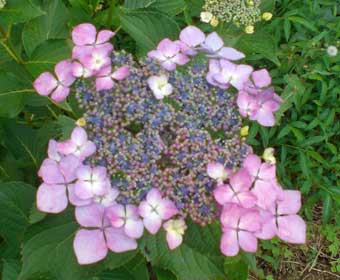
|

|
No.1101
Mophead Type
|
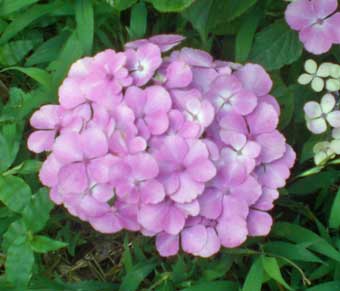
|

|
No. 1102
Mophead Type
|
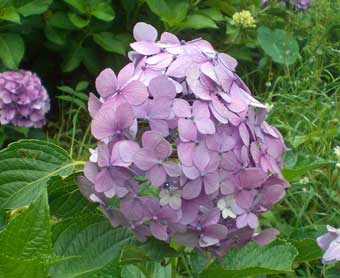
|

|
 No. 1201 No. 1201
The branches are dark purple. |
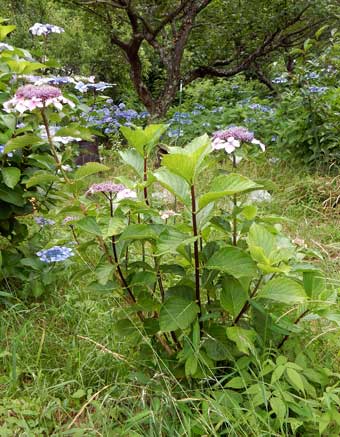
|
|
No. 7f02
Sepals are round and serrate. |

|
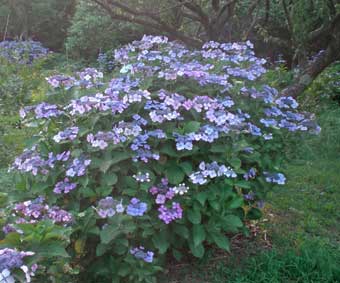
|
No. 7f04
Sepals are irregular shaped, with white stripes. |
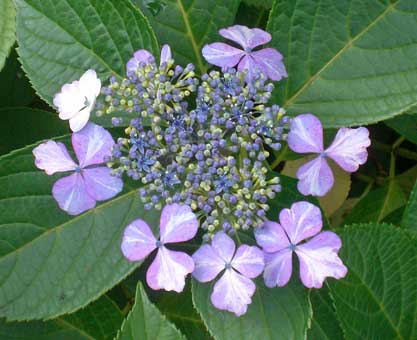
|

|
No. 7f06
Sepals are irregular shaped, with white stripes.
|

|

|
 No. 7f07 No. 7f07
Stripe Type. |
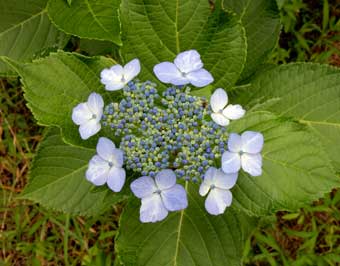
|
|
No. 7f08
The sepals are slightly thin and entire. |
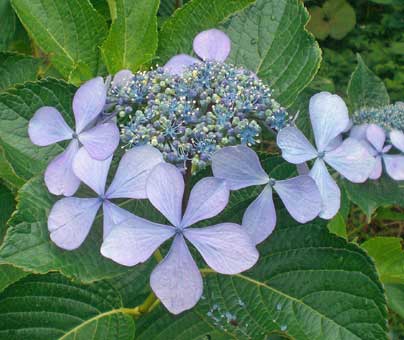
|

|
No.7f09 (Iso shibuki)
The ray-flowera are large, and with white stripes.
|
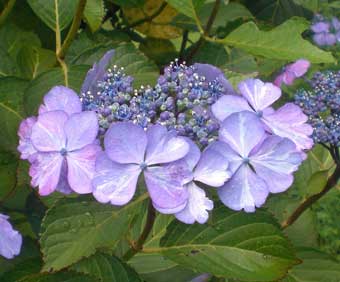
|

|
No.7f11
Stripe Type.
|
 |
|
No. 7f13
The ray-flowers are serrate sepals, beautiful multicolor petals. |
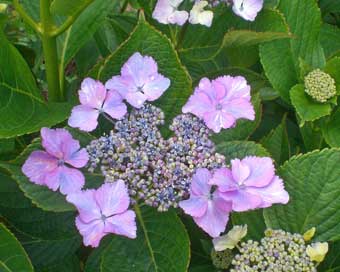
|
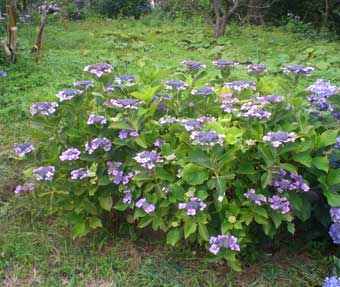
|
No. 7f14
The individual florets are from single to half-double.
The right photograph was taken at the place which grows wild. |
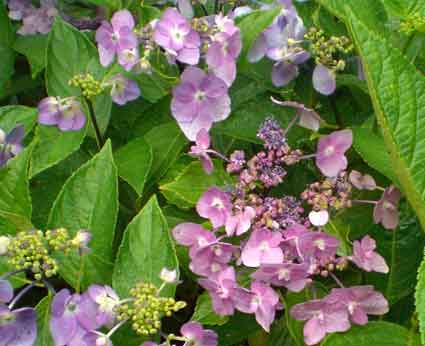
|

|
No.9f05
The flowerheads have many florets.
|
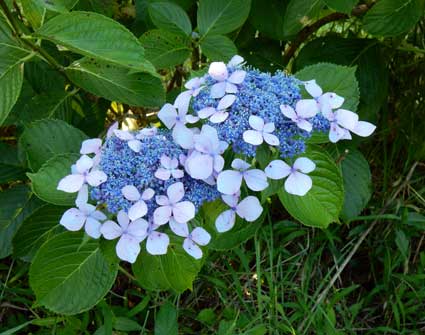 |
|
No. 9f06
The ray-flowers have narrow sepals with white stpipes.
|
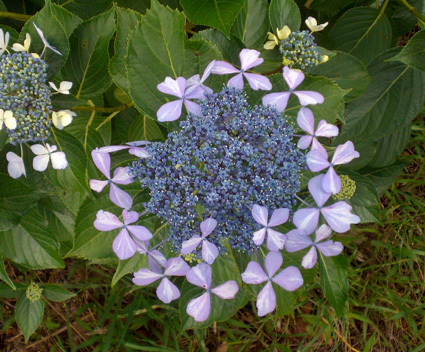
|
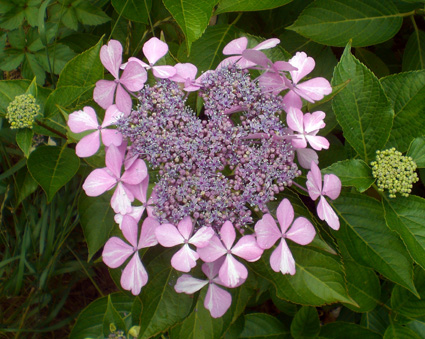
|
No. 9f07
Stripe Type. Ray-flowers are blue with white strips.
|
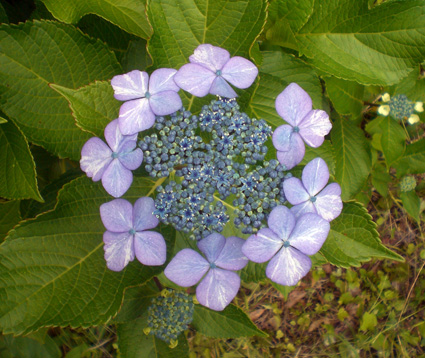 |
|
No. 9f08
The flowerheads are large,.
The right photograph was taken at the place which grows wild. |

|

|
No. 9f09
Stripe Type |
 |
|
No.9f10
The eyes are darker blue, small ray-flowers 4cm.
|

|
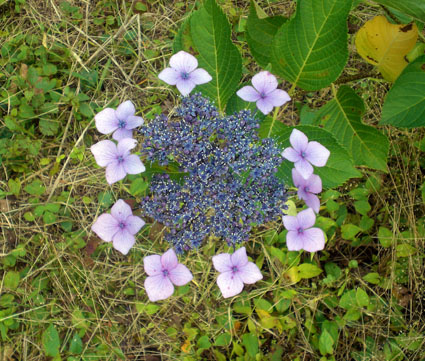
|
No.9f11
Flowerheads are purple, also dark red in alkaline soil, ray-flowers darker
center.
The right photograph was taken at the place which grows wild. |

|

|
No. 9f12
Stripe Type |
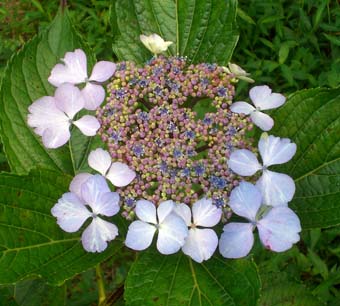 |
|
No. 9f13
|
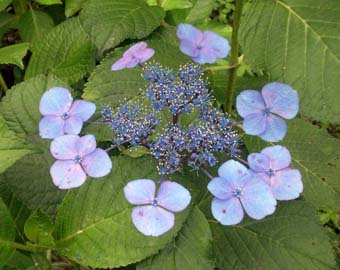 |
|
No.9f14
The ray-flowers form s single ring and purple, with a darker center. |
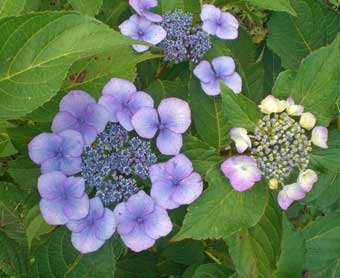
|
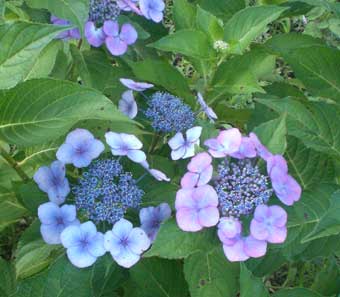
|
No.9f15
The individual florets are from single to half-double. Half-double increases
in number the second half of flowering period |
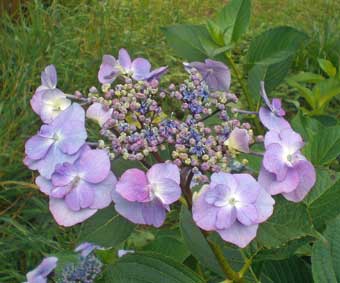
|
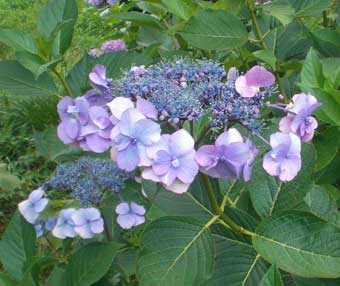
|
No. 9f16
Flowerhead with ray-flowers in a ring, additional flowers between the fertile
flowers. The sepals are blue with white stripes.
The right photograph was taken at the place which grows wild. |

|
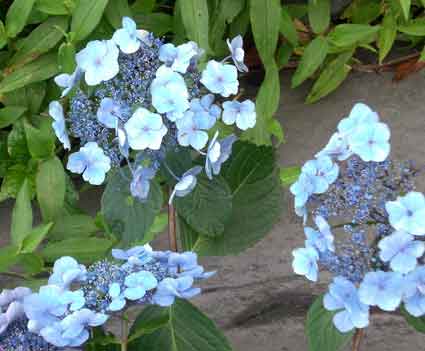
|
No.9f19
The ray-flowers are arranged in one ring, the sepals dentate. This plant
comes out three leaves from one point.
|
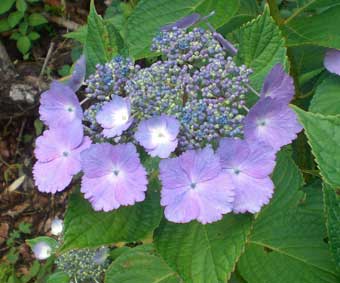
|

|
No. 9f28
The ray-flowers are arranged in a single ring or a double ring, sepals
light blue with white stripes. |
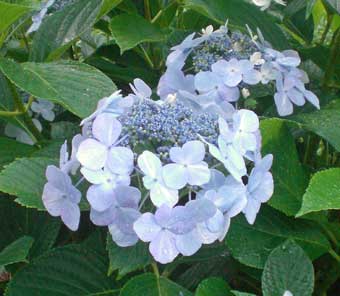
|
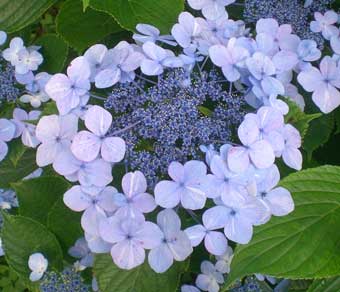
|
No. 9f29
The ray-flowers form s single ring and light purple, with a darker center. |

|

|
No. 10f1
Stripe Type |
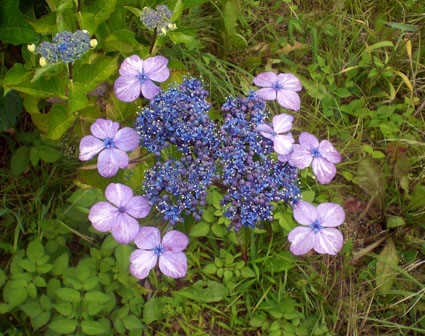
|
|
No.10f2
Stripe Type |
 |
|
No. 11f11
Sepals are round. |
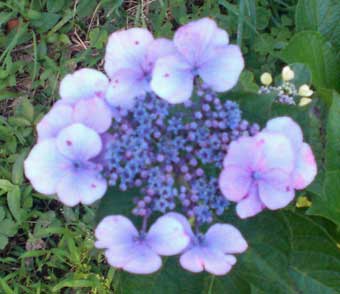
|
|
No. 11f12
The ray flowers are light pink with white stripes in alkaline soils. |
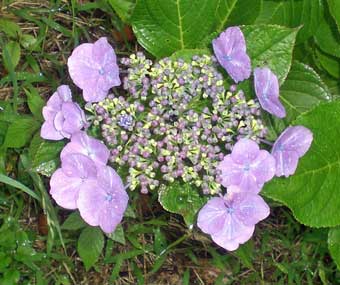
|
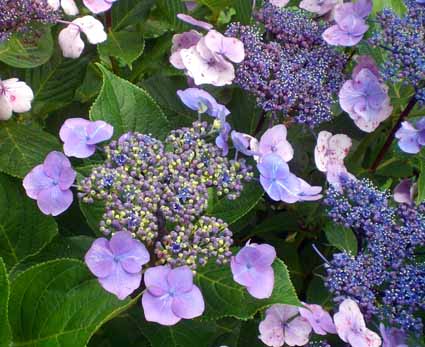
|
No. 16f4
The flowerheads have many florets. |
 |
|
No. 16n8
? |
 |
|
No. 16n9
The flowerheads have 30-40 florets. |
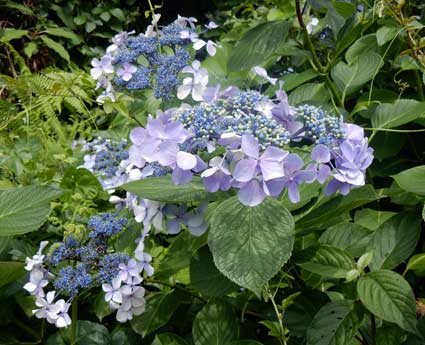 |
|
No. 0i1
The ray-flowers are blue, sepals serrate, and semidouble increases in number
the second half of flowering period
|
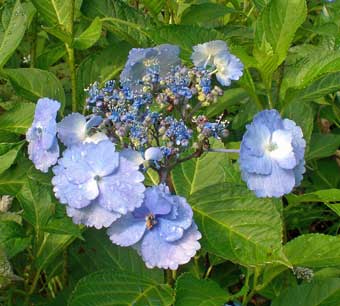
|

|
No. 0i2
The flowers change color twice. They start white and turn light blue with
white stripes, eventually dark blue. |

|

|
No. 0i3
White ray-flowers and fertile flowers. The ray flowers are sometime greenish. |
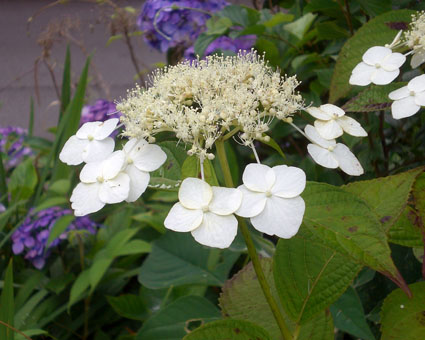
|
|
No. 0y1
The ray-flowers fall downward. |

|

|
No. 0y2
The flowers are pure white, turning to white with red dots. |

|
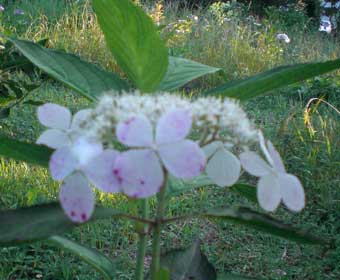
|
No. 0y4
The ray-flowers are light blue. |
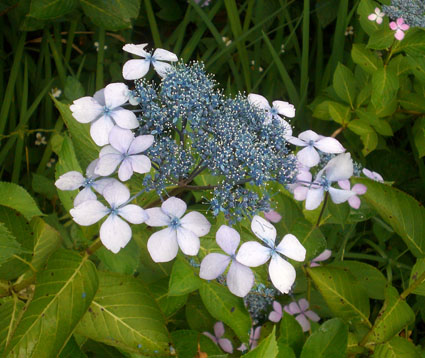
|
|
No. 0y5
The ray-flowers are light blue, sepals dentate. |

|
|
No. 9m02
The florets are double, light blue. |

|
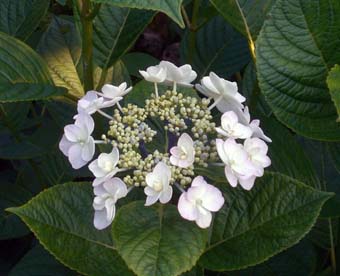
|
No. 9m03
The flowerheads have many florets, and fertile flowers have very small
petals. |

|
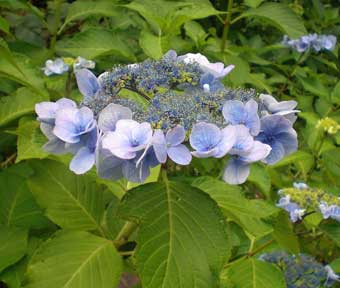
|
No. 10e1
Florets have narrow sepals, 3~4cm across. |

|

|
No. 10e2
The individual florets are from single to double, with white sepals. The
florets are 8~12cm across. |
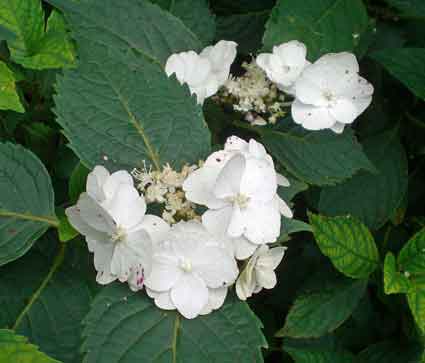
|
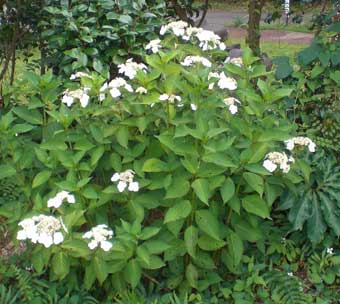
|
No. 10e3
Many blue ray-flowers.
The left photograph was taken at the place which grows wild. |

|

|
No. 10e4
The individual florets are from single to double, with light blue sepals. |
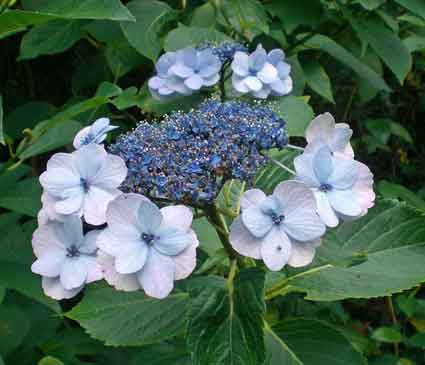
|
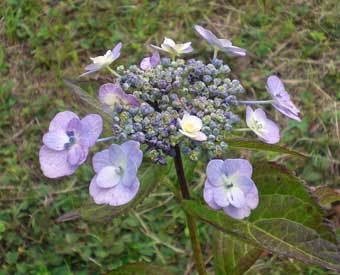
|
No. 10e6
Sepals are round, fertile flowers very dark purple |
 |
|
No. 10e7
The flowerheads have many florets, sometime 30 or more. Florets are light
blue and 3.5~4cm across. The fertile flowers are blue. |
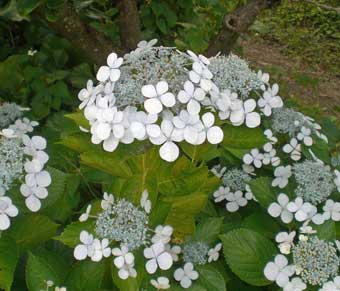
|

|
No. 11e03
Many florets. The florets bloom from the outside of the flower. |
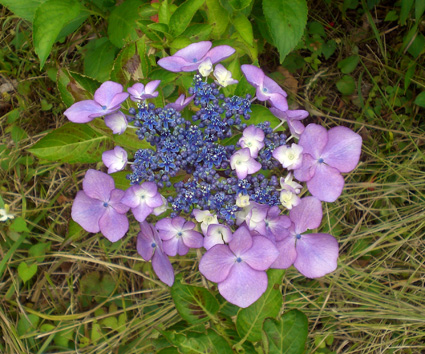 |
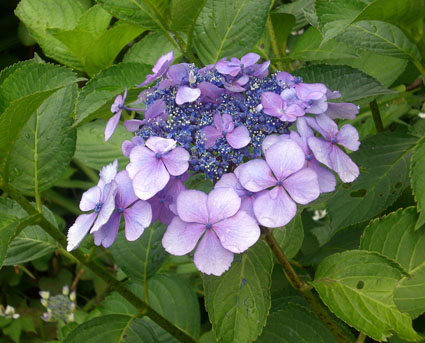 |
No. 11e04
With many white ray-flowers, sometime 15 or more. The flowerheads are 15~23cm
across.
|
 |
|
No. 11e06
Many florets |
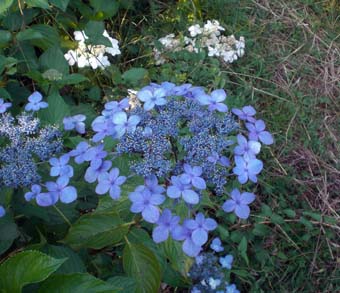 |
|
No. 11e07
The flowerheads have many florets, a partly double ring. The florets bloom
from the outside of the flower. |
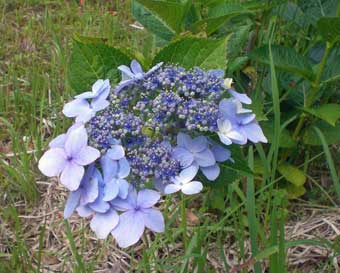
|
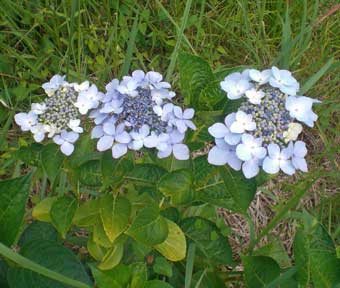
|
No. 11i09
Sepals are round, with white stripes.
The left photograph was taken at the place which grows wild. |
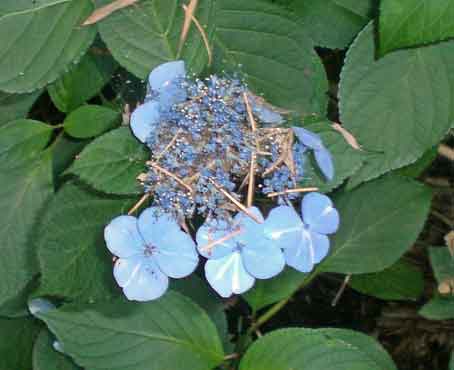
|

|
No. 11ik13
A small compact plant. Ray-flowers are 2~3cm across, pure white with pink
dots |
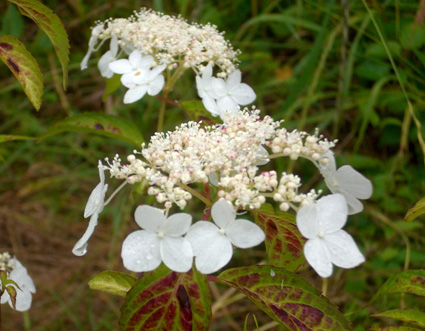
|
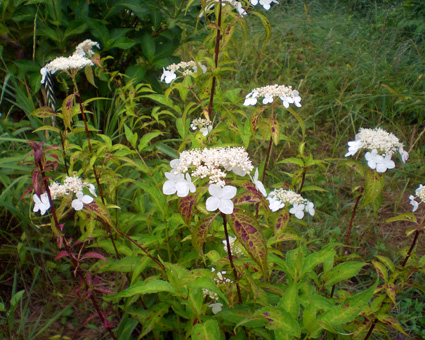
|
No. 0m1
Several places of sepals are close together. |
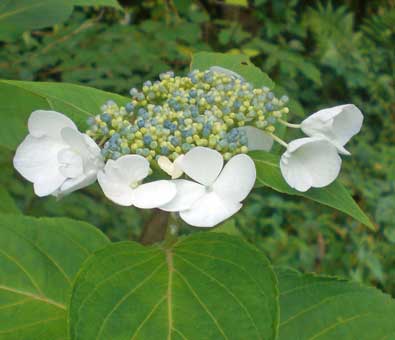
|
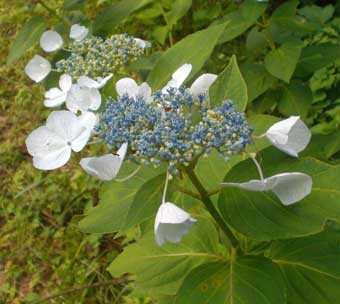
|
No. 0m3
The sepals are first light blue, turning red under the influence of the
sun. |

|
|
No. 8m03
Flowers are blue to purplish red, fertiles dark purple. |

|

|
No. 8m05
The branches are dark purple. The frolets turned up at sepals. |

|
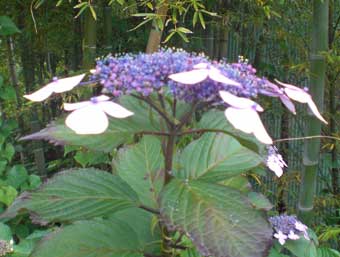
|
No. 8m06
Ray-flowers are light blue and round, fertile flowers very dark purple |

|
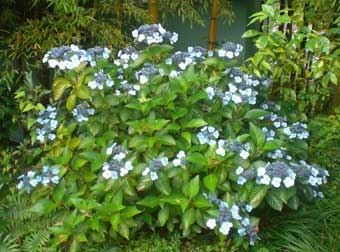
|
No. 8m07
The flowerheads have many florets. |
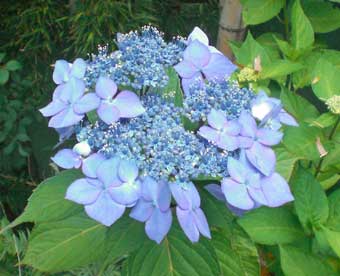
|
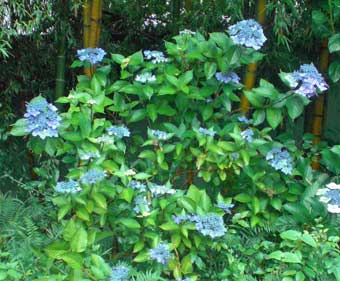
|
No. 8m09
The flowerheads are creamy white when opening, turning to light blue. |
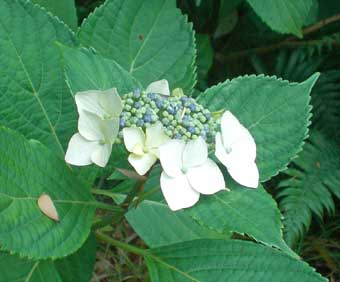
|
|
No. 8m10
The flowerheads are very light blue, form with the movement, folded into
a point |
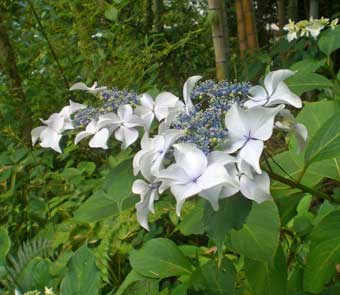
|
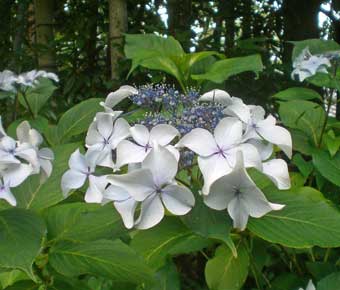
|
No. 8m12
The florets are large.
This was 9.5 cm in diameter at the place which grows wild. |
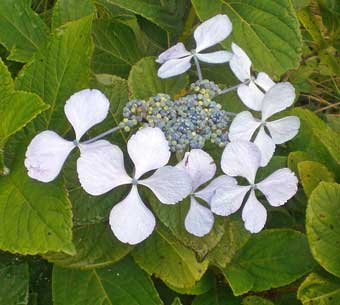
|
|
No. 8m15
stripe |
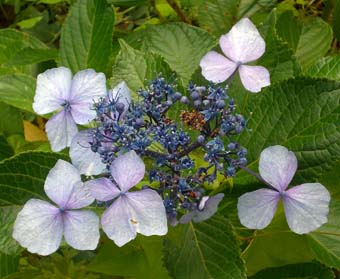 |
|
No. 8m17
The flowerheads have many florets, sepals acuminate. |
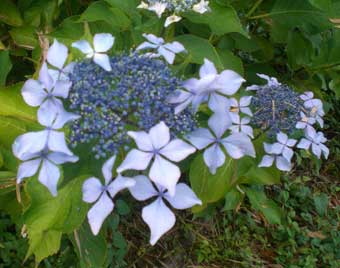
|

|
No. 8mnakagi
The flowerheads are large, florets up to 8.5cm, sepals acuminate. |

|
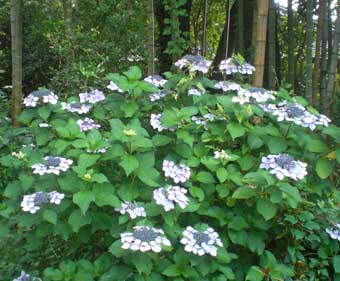
|
No. 9m05
Sepals are round and serrate. |
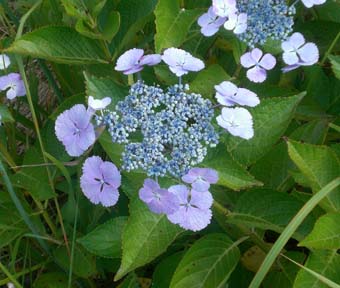 |
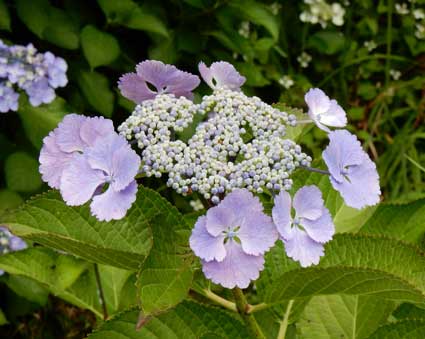 |
No. 9m07
The ray-flowers are a rare color. |
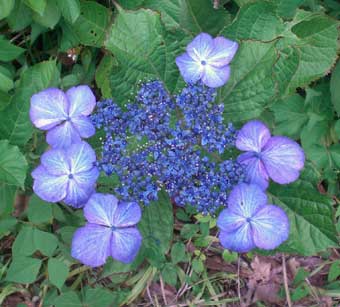
|
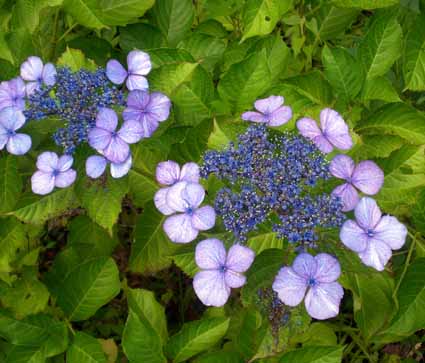
|
No.9m08
The flowerheads have many florets.
|
 |
|
No. 9m09
The flowera are very light blue, with lilac fertile flowers, and really
large sepals, 9cm long. |

|
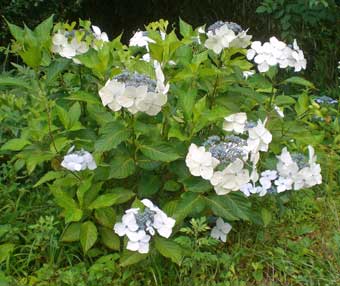
|
No. 10m6
Stripe Type |
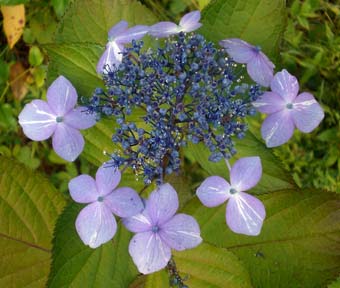 |
|
No. 10m7
The number of sepals varies from a single ring to almost mophead. |

|
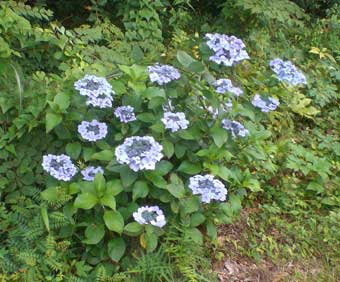
|
No. 13m11
Some sepals are close together |
 |
|
